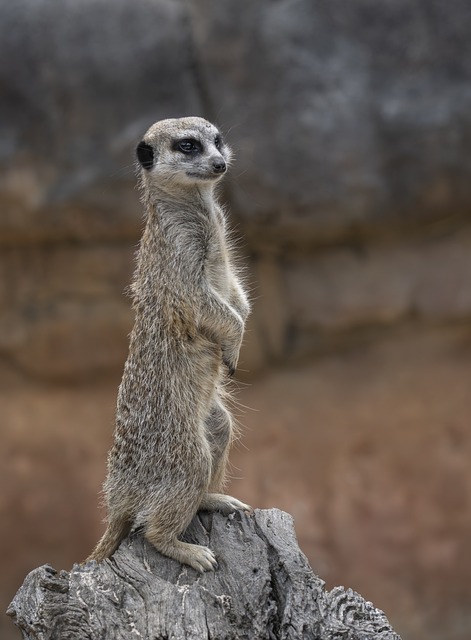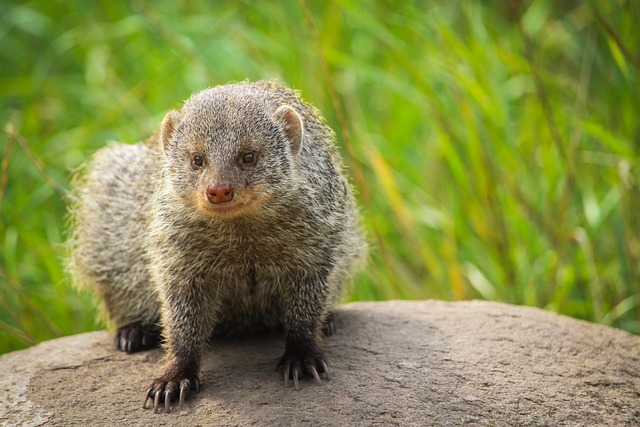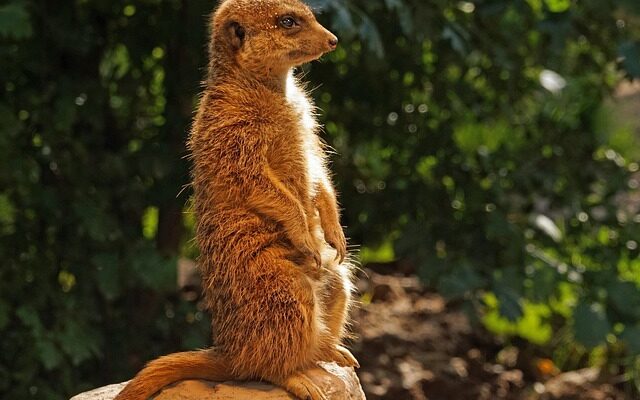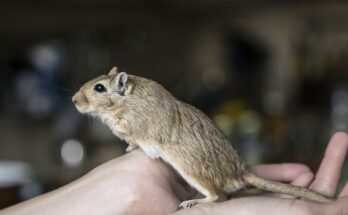Introduction:
Giant Stripped Mongoose:
In the heart of Madagascar’s dense tropical forests resides a mysterious creature that has long captured the imagination of wildlife enthusiasts and researchers alike – the Giant Striped Mongoose (Galidictis grandidieri). With its distinctive striped coat and elusive behavior, this medium-sized carnivore adds a unique chapter to the island’s rich biodiversity. This article aims to delve into the intricate details of the Giant Striped Mongoose, exploring its physical characteristics, habitat, behavior, conservation status, and the cultural significance it holds for the people of Madagascar.
Physical Characteristics:
The Giant Striped Mongoose is a fascinating specimen, both in its appearance and adaptations. Measuring approximately 50 to 60 centimeters in length, with an additional 30 to 40 centimeters contributed by its tail, this carnivore possesses a sleek and agile physique. The most striking feature is, undoubtedly, its coat – a harmonious blend of dark and light stripes that serve as effective camouflage in the lush vegetation of Madagascar. This natural camouflage aids the mongoose in both hunting and evading potential predators.
Habitat and Distribution:

Endemic to Madagascar, the Giant Striped Mongoose finds its niche in the central and eastern regions of the island, primarily within the dense tropical forests. The challenging terrain and its elusive nature make it a rare sight for researchers and wildlife enthusiasts. The mongoose displays adaptability to different elevations within the forested areas, showcasing its resilience in the face of environmental variations.
Behavior and Lifestyle:
The Giant Striped Mongoose is a creature of the night, primarily nocturnal in its habits. This behavior provides several advantages, including avoiding diurnal predators and increasing the chances of successful hunts. With a diet consisting of small mammals, birds, reptiles, and insects, the mongoose employs its sharp claws and teeth for catching prey, relying on its acute sense of smell to navigate the darkness of the night.
The solitary nature of this species contributes to its elusive reputation, making encounters with researchers and photographers a rare and special occurrence. As a result, much of what is known about the Giant Striped Mongoose is based on careful observation and dedicated research efforts.
Conservation Status:
Like many endemic species on Madagascar, the Giant Striped Mongoose faces significant threats to its survival. Habitat loss resulting from deforestation, slash-and-burn agriculture, and logging poses a severe challenge to its existence. The limited distribution of the mongoose intensifies its vulnerability to anthropogenic activities, and the introduction of non-native predators further compounds the threats to its population.

To address these challenges, ongoing conservation efforts are crucial. Researchers are working diligently to deepen our understanding of the species’ ecology, behavior, and population dynamics. This knowledge forms the foundation for effective conservation strategies, including habitat protection, reforestation initiatives, and community education programs.
Conservationists and local communities play a pivotal role in safeguarding the Giant Striped Mongoose. By fostering sustainable practices, promoting responsible tourism, and raising awareness about the mongoose’s importance in maintaining the delicate balance of Madagascar’s ecosystems, we can contribute to the long-term survival of this enigmatic species.
Cultural Significance:
The Giant Striped Mongoose is not merely a biological wonder; it holds cultural significance for the Malagasy people. In the folklore and traditions of Madagascar, the mongoose often serves as a symbol, representing the intricate relationship between humans and nature. The presence of this unique species in local narratives underscores the profound connection between the island’s inhabitants and the diverse array of wildlife that surrounds them.
Conclusion of Giant Stripped Mongoose::
In the heart of Madagascar’s wilderness, the Giant Striped Mongoose stands as a testament to the island’s extraordinary biodiversity. With its mesmerizing appearance, elusive behavior, and cultural importance, this carnivore captivates the hearts and minds of those fortunate enough to witness its presence. As we navigate the challenges of conservation, it is imperative that we recognize the significance of the Giant Striped Mongoose in the intricate web of life on Madagascar. By fostering awareness, implementing conservation measures, and celebrating the cultural richness it represents, we can ensure that this enigmatic species continues to thrive, contributing to the ecological harmony of one of the world’s most unique ecosystems.
The Giant Striped Mongoose, scientifically known as Galidictis grandidieri, continues to be a subject of fascination for scientists, conservationists, and nature enthusiasts alike. Delving deeper into its characteristics and behavior unveils a myriad of features that make this species truly remarkable.
Social Structure:

The Giant Striped Mongoose is known for its solitary lifestyle, with individuals typically preferring to navigate their territories independently. However, during the breeding season, temporary associations between males and females may occur. The solitary nature of these mongooses might be an adaptation to their elusive lifestyle, helping them avoid potential conflicts and competition for resources.
Communication and Vocalizations of Giant Stripped Mongoose:
Communication among Giant Striped Mongooses primarily involves vocalizations and scent marking. While specific details about their vocal repertoire are still under investigation, researchers have observed various sounds, including chirps, chatters, and low growls. These vocalizations likely play a role in territory demarcation, mating rituals, and signaling potential threats or opportunities.
Reproduction and Parental Care:

Limited information is available regarding the reproductive habits of the Giant Striped Mongoose due to its elusive nature. Observations suggest that these mongooses give birth to relatively small litters, with females being responsible for raising and caring for the offspring. The intricacies of their reproductive biology and parental care behaviors remain subjects of ongoing research.
Adaptations for Nocturnal Living:
Being primarily nocturnal, the Giant Striped Mongoose has evolved several adaptations to thrive in low-light conditions. Their large eyes likely enhance their night vision, allowing them to navigate the darkness with ease. Additionally, their keen sense of smell becomes a crucial tool for locating prey in the absence of daylight. These adaptations contribute to their success as nighttime hunters.
Conservation Challenges:
The Giant Striped Mongoose faces numerous threats, primarily stemming from human activities on Madagascar. Deforestation, driven by agricultural expansion and logging, poses a significant risk to the mongoose’s habitat. Additionally, the introduction of non-native predators, such as domestic dogs and cats, exacerbates the pressure on their populations. Climate change, with its potential to alter the island’s ecosystems, also poses an indirect threat to this unique species. Read more




